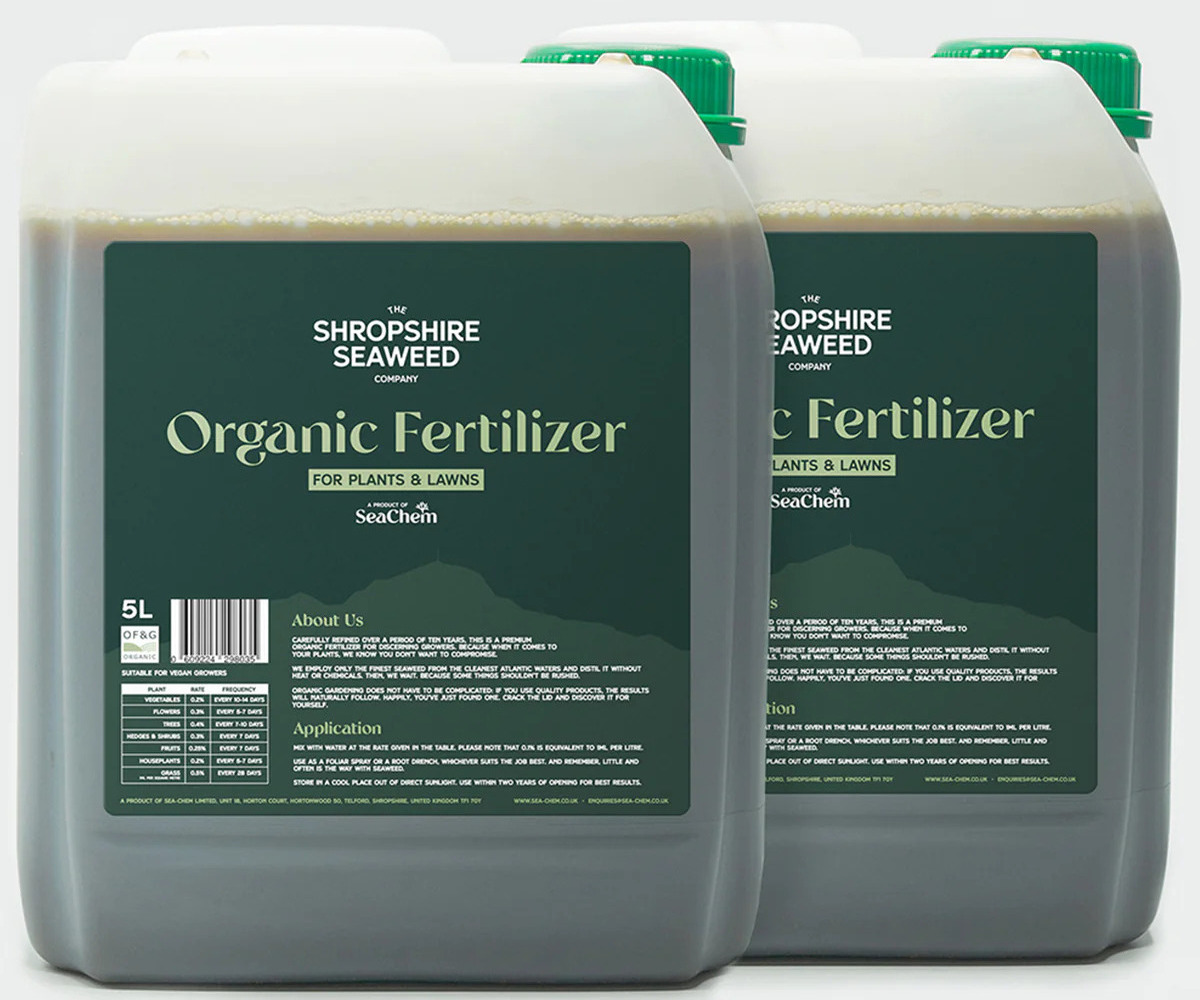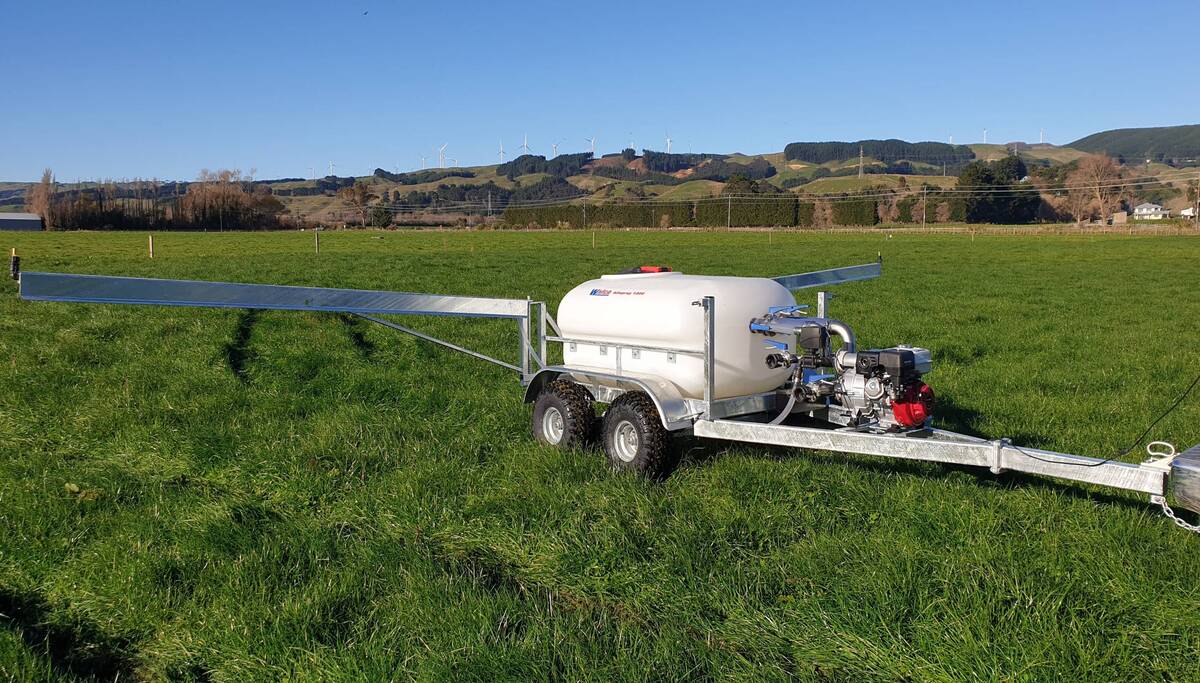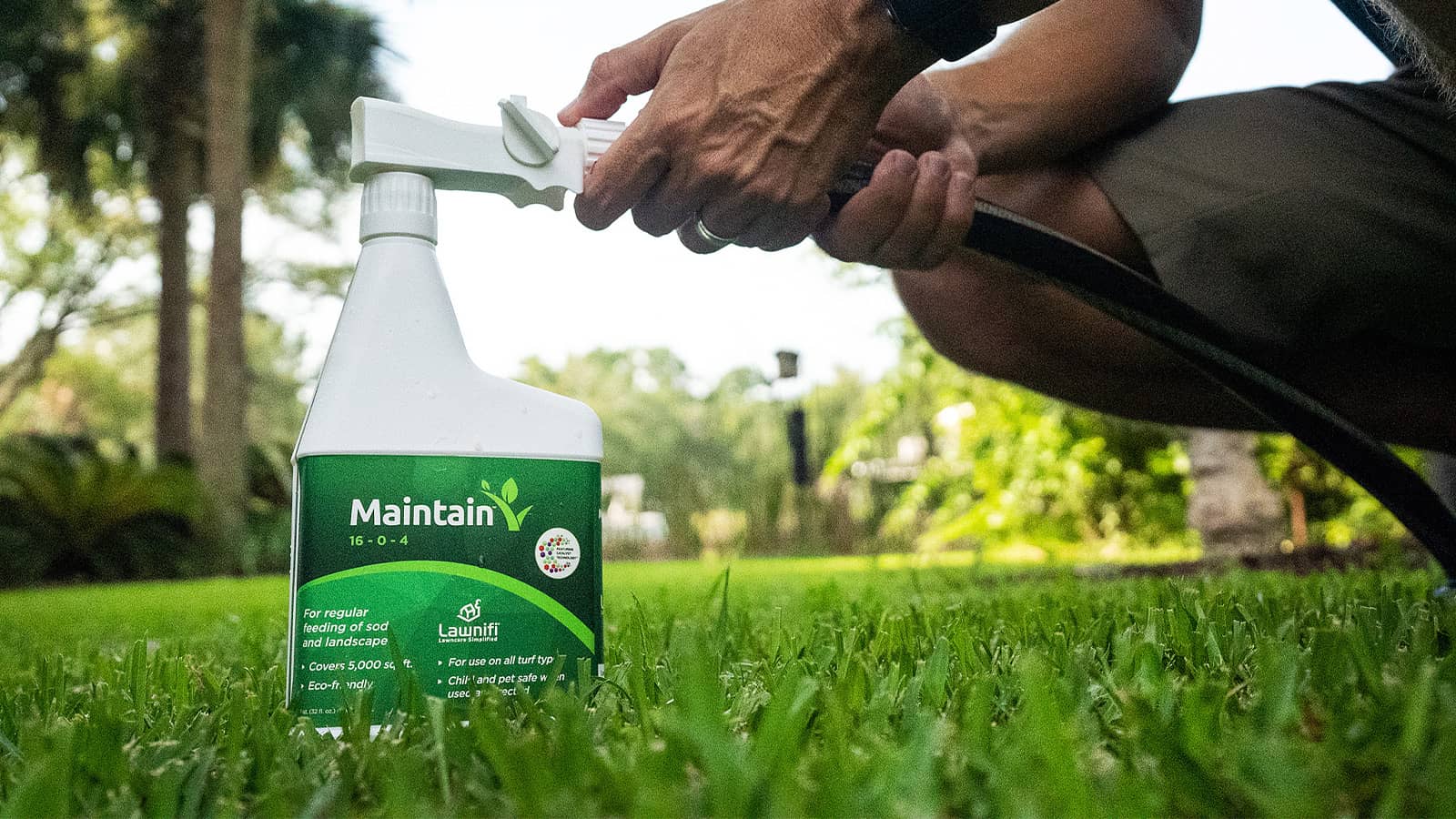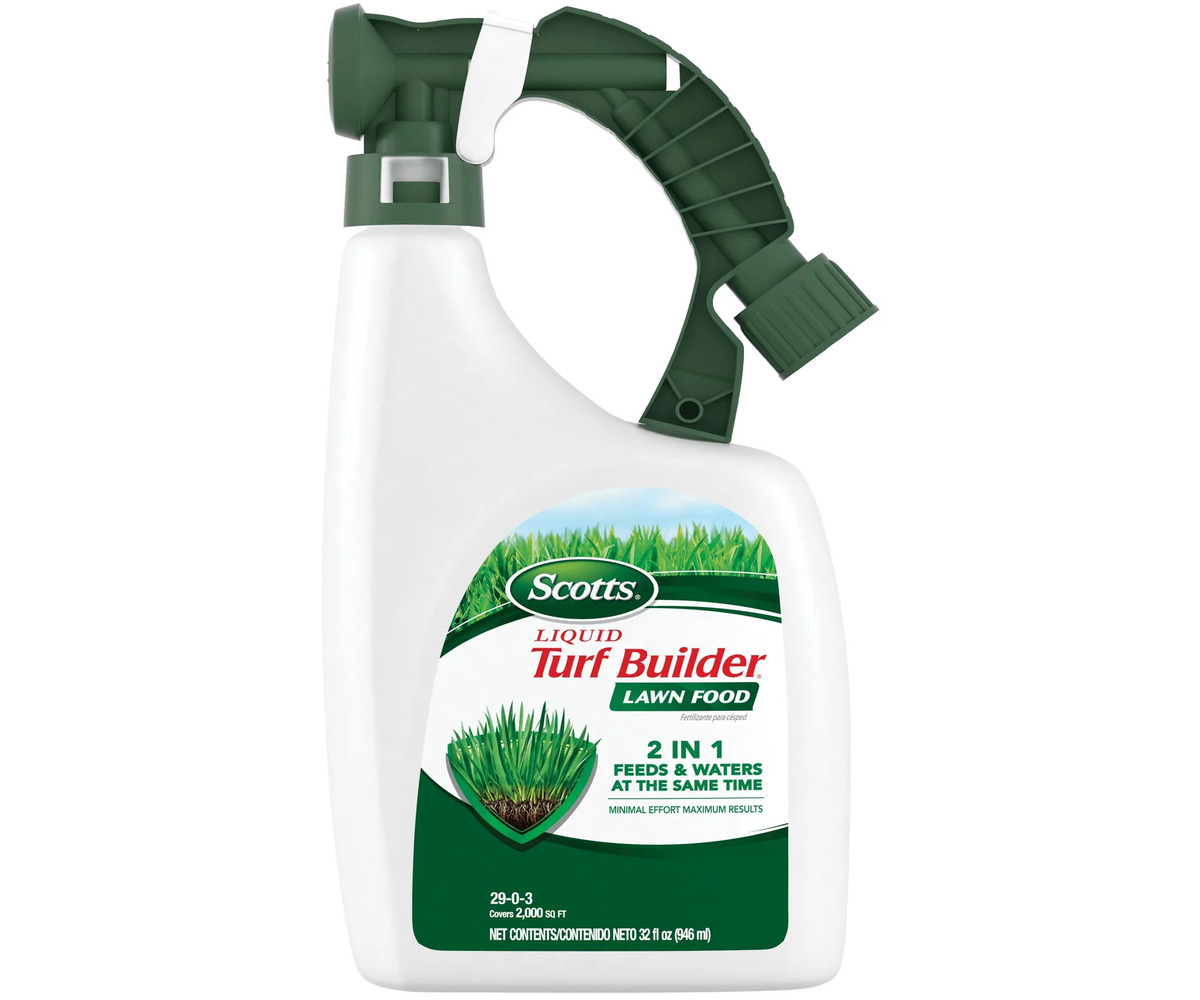Home>Reviews>Product Reviews>How Much Is Liquid Fertilizer


Product Reviews
How Much Is Liquid Fertilizer
Published: August 5, 2023
Read product reviews and get information on liquid fertilizer pricing to find out how much is liquid fertilizer. Guide to choosing the best liquid fertilizer for your needs.
(Many of the links in this article redirect to a specific reviewed product. Your purchase of these products through affiliate links helps to generate commission for Chicagolandgardening.com, at no extra cost. Learn more)
Table of Contents
- Introduction
- Definition of Liquid Fertilizer
- Advantages of Liquid Fertilizers
- Disadvantages of Liquid Fertilizers
- Factors Affecting the Cost of Liquid Fertilizers
- Comparison of Liquid Fertilizer Prices
- Types of Liquid Fertilizers and Their Pricing
- How to Calculate the Cost of Liquid Fertilizer Application
- Factors to Consider When Purchasing Liquid Fertilizers
- Conclusion
Introduction
Welcome to our comprehensive guide on liquid fertilizers and their associated costs. When it comes to enhancing the growth and yield of plants, using the right fertilizer is vital. Liquid fertilizers have gained popularity among gardeners and farmers due to their ease of application and quick absorption by plants. In this article, we will explore the various aspects of liquid fertilizers, including their definition, advantages, disadvantages, factors affecting their cost, pricing comparisons, types, and factors to consider when purchasing.
Before we delve into the details, it’s important to understand what liquid fertilizers are. Simply put, liquid fertilizers are nutrient-rich solutions that contain essential elements such as nitrogen, phosphorus, and potassium, along with other trace minerals that plants need for healthy growth. Unlike traditional solid fertilizers, which need to be broken down and dissolved in water before use, liquid fertilizers are already in a liquid form, making them easy to apply directly to plants.
Now that we have a basic understanding, let’s consider the advantages of using liquid fertilizers. One significant advantage is their rapid absorption by plants. Due to their liquid form, nutrients are readily available for uptake by plant roots, resulting in quicker and more efficient nutrient absorption. Liquid fertilizers also offer greater flexibility in application methods. They can be applied through various means, including foliar spraying, root drenching, and irrigation systems, allowing for precise and targeted nutrient delivery.
On the other hand, it’s important to be aware of the disadvantages of liquid fertilizers as well. One drawback is their relatively higher cost compared to solid fertilizers. Liquid fertilizers require additional components and processes for their production, which contributes to the increased price. Another consideration is their shorter lifespan. Liquid fertilizers have a limited shelf life and can degrade over time, leading to a decrease in nutrient availability. However, with proper storage and handling, this issue can be mitigated.
Now that we’ve touched on the advantages and disadvantages, let’s explore the factors that affect the cost of liquid fertilizers. Several factors come into play, including the type and quality of ingredients used, the manufacturing process, branding, and market demand. Additionally, the packaging size and quantity also play a role in determining the overall cost. Understanding these factors can help you make informed decisions when purchasing liquid fertilizers.
Continuing further, we will delve into a comparison of liquid fertilizer prices. It’s essential to have an understanding of the price range of different liquid fertilizers available in the market to ensure you get the best value for your money. We’ll explore various brands and types of liquid fertilizers and provide insight into their pricing to help you make an informed choice.
Definition of Liquid Fertilizer
Liquid fertilizer is a concentrated nutrient solution designed to provide essential elements for plant growth and development. It is formulated by dissolving or suspending water-soluble nutrients, such as nitrogen, phosphorus, and potassium, along with micronutrients, in a liquid carrier. This carrier can be water, organic substances, or other liquid agents.
Unlike solid fertilizers, which typically come in a granular or powdered form, liquid fertilizers are already in a liquid state, making them easily soluble in water. This allows for convenient and efficient application directly to plant roots or foliage. Liquid fertilizers are commonly used in various agricultural practices, including farm crop production, greenhouse cultivation, gardening, landscaping, and turf management.
The composition of liquid fertilizers varies depending on the desired nutrient requirements for specific plants and growing conditions. Manufacturers produce a wide range of liquid fertilizers tailored to meet the nutritional needs of different crops and plant varieties. These fertilizers are often labeled with the ratio of nitrogen (N), phosphorus (P), and potassium (K), known as the N-P-K ratio.
There are different types of liquid fertilizers available, each with its own set of benefits. Here are a few common types:
1. Nitrogen-based fertilizers: These liquid fertilizers are formulated to provide a high concentration of nitrogen, which is essential for promoting lush green foliage growth. They are beneficial for leafy vegetables, grasses, and plants that require a boost in their vegetative development.
2. Phosphorus-based fertilizers: Liquid fertilizers with a higher phosphorus content are recommended for crops and plants that require enhanced root development, flowering, and fruit setting. Phosphorus is crucial for energy transfer and plays a vital role in promoting overall plant growth and productivity.
3. Potassium-based fertilizers: These liquid fertilizers are rich in potassium, which aids in improving plant tolerance to environmental stress, disease resistance, and fruit quality. Potassium helps regulate water uptake, nutrient transportation, and overall plant metabolism.
4. Micronutrient fertilizers: Liquid fertilizers also come in formulations that contain essential trace elements like iron, zinc, manganese, copper, and boron. These micronutrients are required in smaller quantities but are equally important for maintaining optimal plant health and addressing specific nutrient deficiencies.
It is important to note that while liquid fertilizers offer many advantages, they should be used judiciously according to plant needs and recommended application rates. Over-application can lead to nutrient imbalances, environmental pollution, and even plant damage. Following recommended guidelines and conducting regular soil testing can help growers make informed decisions and optimize the use of liquid fertilizers for optimal results.
Advantages of Liquid Fertilizers
Liquid fertilizers have gained popularity among farmers and gardeners due to several advantages they offer over traditional solid fertilizers. Let’s explore some of the key benefits of using liquid fertilizers:
1. Rapid Absorption: One of the significant advantages of liquid fertilizers is their quick absorption by plants. Since liquid fertilizers are already in a dissolved form, they can be readily absorbed by plant roots and foliage. This immediate uptake of nutrients allows plants to access vital elements more efficiently, promoting faster and healthier growth.
2. Precision Application: Liquid fertilizers offer greater flexibility in terms of application methods. They can be applied directly to the plant’s root zone, through foliar spraying, or via irrigation systems. This precision application ensures that nutrients are delivered exactly where they are needed, resulting in optimal nutrient uptake by the plants.
3. Increased Nutrient Availability: Liquid fertilizers are formulated to provide nutrients in a readily available form. Their liquid composition ensures that the essential elements are easily absorbed by plant roots. This higher nutrient availability ensures that plants receive the necessary elements in a form that can be quickly taken up, leading to improved plant health and productivity.
4. Improved Plant Response: Due to their rapid absorption and increased nutrient availability, liquid fertilizers can yield quicker and more noticeable plant responses. Plants receiving liquid fertilizer treatments often exhibit enhanced growth, increased flowering and fruiting, and improved overall vigor. This makes liquid fertilizers an excellent choice for plants that need quick nutrient supplementation or are in need of a growth boost.
5. Enhanced Micronutrient Delivery: Liquid fertilizers are an effective means of delivering essential micronutrients to plants. Micronutrients, including iron, zinc, manganese, and copper, are vital for various metabolic processes in plants. Liquid fertilizers that contain these micronutrients ensure that plants receive these necessary elements in the right proportion, addressing nutrient deficiencies and promoting optimal plant functioning.
6. Convenience and Efficiency: Another advantage of liquid fertilizers is their convenience and ease of use. Unlike solid fertilizers that need to be mixed, dissolved, or spread, liquid fertilizers are already in a ready-to-use form. This saves time and effort during application, making them a more efficient choice, especially for large-scale operations.
7. Homogeneous Nutrient Distribution: Liquid fertilizers offer homogeneity in nutrient distribution, ensuring that all plants within the application area receive a consistent supply of essential elements. This helps to avoid nutrient imbalances and ensures that plants receive a uniform nutrient profile, leading to consistent growth and development.
Overall, the advantages of liquid fertilizers make them a preferred choice for many growers. From their rapid absorption and precision application to their increased nutrient availability and enhanced plant response, liquid fertilizers offer several benefits that contribute to improved plant health, increased yields, and overall crop success.
Disadvantages of Liquid Fertilizers
While liquid fertilizers offer numerous advantages, it is essential to consider the potential disadvantages associated with their use. Here are some key drawbacks of liquid fertilizers:
1. Higher Cost: One significant disadvantage of liquid fertilizers is their relatively higher cost compared to solid fertilizers. The production of liquid fertilizers involves additional processes, such as mixing and dissolution, which contribute to increased manufacturing costs. This, in turn, translates to a higher price for consumers. However, it is worth noting that the higher cost may be offset by the efficiency and effectiveness of liquid fertilizers in delivering essential nutrients to plants.
2. Limited Shelf Life: Liquid fertilizers have a shorter shelf life compared to solid fertilizers. The liquid composition of these fertilizers can make them susceptible to degradation over time. Exposure to air, light, and temperature fluctuations can affect the stability of the nutrients in liquid fertilizers, leading to a decrease in their effectiveness. Proper storage and handling are crucial to mitigate this issue and ensure the longevity of liquid fertilizers.
3. Dilution Requirements: Liquid fertilizers typically need to be diluted in water before application. This additional step adds complexity to the fertilization process, requiring careful measurement and mixing to ensure the correct nutrient concentration. Moreover, the dilution process can result in variations in nutrient concentration if not done correctly, leading to improper nutrient application and potential plant damage.
4. Environmental Impact: The use of liquid fertilizers can pose environmental risks if not managed properly. Over-application or improper use can lead to nutrient runoff into water bodies, causing nutrient pollution. This can result in damaging effects on aquatic ecosystems, including algal blooms and oxygen depletion. It is essential to adhere to recommended application rates and follow best management practices to minimize the environmental impact of liquid fertilizers.
5. Storage and Handling Challenges: The liquid form of fertilizers can present storage and handling challenges, especially when dealing with large quantities. Liquid fertilizers require suitable storage facilities that can accommodate their specific requirements such as temperature control and protection from light. Additionally, spills or leaks during handling can result in wastage and potential safety hazards. Proper training and precautions should be taken to ensure safe storage and handling of liquid fertilizers.
While these disadvantages should be considered, they should not discourage the use of liquid fertilizers. By understanding and addressing these challenges, growers can make informed decisions and take appropriate measures to maximize the benefits of liquid fertilizers while minimizing the associated drawbacks.
Factors Affecting the Cost of Liquid Fertilizers
The cost of liquid fertilizers can vary depending on several factors. It is important to consider these factors when evaluating the pricing of liquid fertilizers. Let’s take a closer look at the key factors that influence the cost:
1. Nutrient Composition: The nutrient composition of a liquid fertilizer plays a significant role in determining its cost. Fertilizers with higher concentrations of essential nutrients, such as nitrogen (N), phosphorus (P), and potassium (K), are often more expensive. The cost of sourcing and processing these nutrients, along with their market demand, contribute to the overall price of the liquid fertilizer.
2. Quality of Ingredients: The quality and purity of the ingredients used in liquid fertilizers can impact their cost. Higher-quality ingredients, such as advanced formulations and chelated micronutrients, are typically more expensive. Manufacturers often invest in research and development to produce high-quality liquid fertilizers, which can reflect in their pricing.
3. Manufacturing Process: The manufacturing process of liquid fertilizers can affect their cost. Additional steps, such as mixing, dissolving, or suspending nutrients in a liquid carrier, can increase production costs. Certain liquid fertilizers may require more complex production techniques or specialized equipment, contributing to higher prices.
4. Branding and Packaging: Brand recognition and packaging design can impact the cost of liquid fertilizers. Well-established brands with a strong market presence may command a premium price. Additionally, the packaging used, whether it is in bottles, cans, or larger containers, can also affect the cost. Packaging that offers convenience, durability, and proper sealing may entail higher production expenses.
5. Market Demand and Supply: The demand and supply dynamics of liquid fertilizers influence their pricing. Higher demand and limited supply can drive up prices, especially during peak seasons or in regions where liquid fertilizers are widely used. Factors such as weather conditions, crop trends, and global market fluctuations can all impact the supply and demand of liquid fertilizers.
6. Quantity and Packaging Size: The quantity and packaging size of liquid fertilizers can impact their cost. Large volume purchases or bulk packaging options may provide cost savings compared to smaller or individual units. However, it is essential to consider the storage and usage requirements when opting for larger packaging sizes.
7. Market Competition: The level of competition in the liquid fertilizer market can influence pricing. In regions where multiple manufacturers and suppliers exist, competitive pricing strategies may be employed to attract customers. Consumers can benefit from comparing prices and exploring different brands to find a balance between cost and quality.
Understanding the factors that affect the cost of liquid fertilizers can help growers make informed decisions when purchasing. It is important to consider the nutrient composition, ingredient quality, manufacturing process, branding, market dynamics, packaging, and competition to ensure a good value for money. By evaluating these factors, growers can select the most suitable liquid fertilizer option that aligns with their budget and specific crop needs.
Comparison of Liquid Fertilizer Prices
When considering the purchase of liquid fertilizers, comparing prices is essential to ensure you are getting the best value for your investment. The cost of liquid fertilizers can vary depending on factors such as brand, nutrient composition, quality, and packaging size. Let’s explore how prices can differ and how to compare them effectively:
1. Brand Variations: Different brands offer liquid fertilizers with varying price points. Well-established and reputable brands may have higher prices due to their reputation for quality and effectiveness. On the other hand, lesser-known brands or generic options might offer lower prices without compromising on nutrient content. It’s important to research and read reviews to find the right balance between cost and quality.
2. Nutrient Composition: The nutrient composition of liquid fertilizers directly affects their cost. Fertilizers with higher concentrations of nitrogen (N), phosphorus (P), and potassium (K) tend to be more expensive. However, it’s important to consider the nutrient requirements of your specific plants or crops to avoid overpaying for unnecessary nutrients. Analyzing the nutrient analysis on the label can help determine if the price aligns with the nutrient content.
3. Quality and Purity: Liquid fertilizers that utilize high-quality ingredients and advanced formulations may be priced higher than their counterparts. These fertilizers often undergo rigorous testing and quality control measures to ensure optimal nutrient availability and effectiveness. While the upfront cost may be higher, the improved performance and results can justify the investment.
4. Packaging Size and Quantity: Liquid fertilizers are available in various packaging sizes, from small bottles to large containers. The price per unit can be significantly lower when purchasing in bulk or larger quantities. Assess your fertilizer usage needs and consider the storage capacity to determine whether larger packaging sizes offer cost savings without compromising on product quality and shelf life.
5. Comparative Analysis: To effectively compare liquid fertilizer prices, make a list of the brands and products you are considering. Take note of the nutrient composition, packaging size, and price per unit for each product. Calculate the cost per nutrient content to make an accurate comparison. Additionally, consider customer reviews, feedback, and recommendations to assess the overall value and performance of the product.
It’s important to note that while price is a significant factor, it should not be the sole determinant in choosing a liquid fertilizer. Evaluating factors such as nutrient availability, compatibility with your crop or plant type, and environmental sustainability of the product are equally important. Striking a balance between cost and quality is key to ensuring you choose a liquid fertilizer that meets your specific needs and delivers the desired results.
Types of Liquid Fertilizers and Their Pricing
Liquid fertilizers come in various types, each tailored to address specific plant nutrient requirements and growth stages. The pricing of these liquid fertilizers can vary based on factors such as nutrient composition, brand reputation, and packaging size. Let’s explore some common types of liquid fertilizers and their corresponding pricing:
1. All-Purpose Liquid Fertilizers: All-purpose liquid fertilizers are formulated to provide a balance of essential nutrients needed for overall plant health and growth. These fertilizers typically contain a balanced ratio of nitrogen (N), phosphorus (P), and potassium (K), along with secondary and micronutrients. Pricing for all-purpose liquid fertilizers can be affordable, with options available at various price points depending on brand and packaging size.
2. Liquid NPK Fertilizers: Liquid fertilizers with higher concentrations of specific nutrients, such as nitrogen, phosphorus, or potassium, are commonly found in the market. These NPK formulations cater to specific plant requirements, and their pricing can range from moderate to high, depending on the brand, nutrient concentration, and packaging size.
3. Organic Liquid Fertilizers: Organic liquid fertilizers are derived from natural sources and are an environmentally friendly option for plant nutrition. These fertilizers are often higher in price compared to synthetic options due to the more complex manufacturing processes involved in sourcing and processing organic materials. The pricing of organic liquid fertilizers can also be influenced by the brand reputation and certifications involved in organic farming practices.
4. Foliar Fertilizers: Foliar fertilizers are liquid fertilizers designed for foliar application, wherein nutrients are sprayed directly onto the leaves of plants for efficient absorption. Due to their specialized application method and increased nutrient availability, foliar fertilizers tend to be priced slightly higher than traditional liquid fertilizers. However, their effectiveness in delivering nutrients directly to the plant’s foliage justifies the higher cost for many growers.
5. Micronutrient Liquid Fertilizers: Micronutrient liquid fertilizers contain essential trace elements, such as iron, zinc, manganese, copper, and boron. These fertilizers address specific nutrient deficiencies and promote healthy plant growth. The pricing of micronutrient liquid fertilizers can vary depending on the concentration and quality of the micronutrients used. Higher-quality formulations and chelated micronutrients may come at a higher price point.
6. Specialty Liquid Fertilizers: Specialty liquid fertilizers cater to specific crop types or growth stages. These can include fertilizers for fruiting plants, flowering plants, hydroponics, or specific soil types. Due to their specialized formulations and targeted applications, pricing for specialty liquid fertilizers may be higher than general-purpose liquid fertilizers.
It’s important to consider the specific nutrient requirements of your plants, the desired results, and your budget when selecting a type of liquid fertilizer. Carefully reading labels, comparing prices, and considering the reputation and quality of different brands will help you find the right balance between cost and effectiveness for your specific needs.
How to Calculate the Cost of Liquid Fertilizer Application
Calculating the cost of liquid fertilizer application is an important step in managing your fertilization budget and ensuring proper nutrient supplementation for your plants. Here are the key factors to consider when determining the cost:
1. Determine Application Rate: The first step is to determine the recommended application rate for the specific liquid fertilizer you are using. This information is typically provided on the product label or can be obtained from the manufacturer. The application rate is usually given in terms of volume or weight per unit area.
2. Measure Application Area: Measure the area that you will be fertilizing. This can be the total area of your field, garden, or specific plot where you’ll be applying the liquid fertilizer. The area can be measured in square feet or meters, depending on your preference and region.
3. Calculate Total Fertilizer Needed: Multiply the application rate by the area to calculate the total amount of liquid fertilizer needed. For example, if the recommended application rate is 2 liters per square meter and your area is 100 square meters, then you would need 200 liters of liquid fertilizer for the application.
4. Determine Fertilizer Cost: Next, determine the cost of the liquid fertilizer per unit (e.g., per liter or gallon). This information can be found on the product label or obtained from the manufacturer or supplier. The cost can vary depending on the brand, nutrient composition, quality, and packaging size.
5. Calculate Total Fertilizer Cost: Multiply the total amount of liquid fertilizer needed by the cost per unit to calculate the total cost of the liquid fertilizer for the application. For example, if the cost per liter is $10 and you need 200 liters, then the total cost would be $2000.
6. Consider Additional Costs: It’s important to consider any additional costs associated with the liquid fertilizer application. This can include costs of equipment or labor involved in the application process, transportation costs, or any other associated expenses. These additional costs can vary depending on your specific setup and requirements.
7. Evaluate Cost-Effectiveness: Once you have calculated the total cost of liquid fertilizer application, evaluate its cost-effectiveness by considering factors such as the expected crop yield, quality improvement, or overall plant health. Assessing the returns on investment is crucial in determining if the cost of the liquid fertilizer application aligns with the potential benefits.
Regularly reviewing and adjusting your fertilization budget and monitoring the effectiveness of your liquid fertilizer application can help optimize cost-efficiency and ensure optimal plant nutrition. Keep records of your fertilizer application rates, costs, and crop performance to make informed decisions in future growing seasons.
Factors to Consider When Purchasing Liquid Fertilizers
When purchasing liquid fertilizers, it’s important to consider several factors to ensure that you select the right product for your specific needs. Here are some key factors to consider:
1. Nutrient Requirements: Understand the specific nutrient requirements of your plants or crops. Different plants have varying nutrient needs at different stages of growth. Assess the soil fertility and conduct soil tests to determine any nutrient deficiencies or imbalances. Choosing a liquid fertilizer that matches the nutrient needs of your plants is crucial to promote optimal growth and prevent nutrient-related issues.
2. Nutrient Content and Ratio: Examine the nutrient composition and ratio of the liquid fertilizer. The label must clearly state the percentage or concentration of nitrogen (N), phosphorus (P), potassium (K), and other essential nutrients. Ensure that the ratios align with the specific needs of your plants. Understanding the nutrient content and ratio helps prevent over or under-fertilization, allowing for precise and balanced nutrient supplementation.
3. Quality and Purity: Consider the quality and purity of the liquid fertilizer. Look for products that meet recognized industry standards and undergo regular quality control testing. Higher quality fertilizers typically result in better nutrient availability and absorption by plants, leading to improved growth and yield. Check for any certifications or endorsements from agricultural authorities or organic farming associations if you have specific preferences for organic or environmentally friendly options.
4. Compatibility with Application Method: Assess the compatibility of the liquid fertilizer with your desired application method. Some liquid fertilizers are specifically formulated for foliar spraying, while others are better suited for fertigation or soil drenching. Ensure that the chosen liquid fertilizer can be applied through your preferred method, as different application methods offer varying levels of effectiveness and convenience.
5. Packaging and Storage: Consider the packaging and storage requirements of the liquid fertilizer. Evaluate factors such as container size, durability, ease of use, and sealing to ensure efficient handling and long-term storage. Good packaging helps maintain the quality and shelf life of the liquid fertilizer, while proper storage practices prevent degradation and loss of effectiveness over time.
6. Brand Reputation and Reviews: Investigate the brand reputation and read customer reviews or testimonials regarding the liquid fertilizer you are considering. Reputable brands often have a track record of reliable and effective products. Customer feedback can provide insight into the performance, ease of use, and overall satisfaction with the product. Consider recommendations from fellow gardeners, farmers, or agricultural experts to make an informed decision.
7. Price and Value for Money: Lastly, consider the price and overall value for money. Compare the prices of different brands and formulations, taking into account factors such as nutrient content, quality, and packaging size. Assess the cost-effectiveness of the liquid fertilizer by balancing the price against the expected benefits and improvements in plant growth, yield, and overall health.
By considering these factors, you can make an informed decision when purchasing liquid fertilizers, ensuring that you select the most suitable product to meet the nutrient requirements and goals of your plants or crops. Regular monitoring and evaluation of the results will allow you to make adjustments and optimize your fertilization practices for long-term success.
Conclusion
Liquid fertilizers offer a convenient and effective way to provide essential nutrients to plants. Understanding the advantages and disadvantages of liquid fertilizers is crucial in making informed decisions about their use. The factors affecting the cost of liquid fertilizers, such as nutrient composition, brand reputation, and packaging size, should be carefully considered to ensure optimal value for money. Comparing prices and evaluating the different types of liquid fertilizers can help you select the most appropriate product for your specific needs and budget.
Calculating the cost of liquid fertilizer application and considering additional expenses, such as equipment and labor, helps you manage your fertilization budget effectively. Evaluating the nutrient requirements, nutrient content, quality, and compatibility with your preferred application method ensures that you choose the right liquid fertilizer for your plants or crops.
In conclusion, liquid fertilizers provide numerous benefits, including rapid nutrient absorption, precision application, and increased nutrient availability. Despite their higher cost compared to solid fertilizers, their convenience and effectiveness make them a popular choice among growers. By carefully considering the factors discussed in this guide when purchasing and applying liquid fertilizers, you can optimize plant nutrition and achieve improved growth, yield, and overall plant health.









